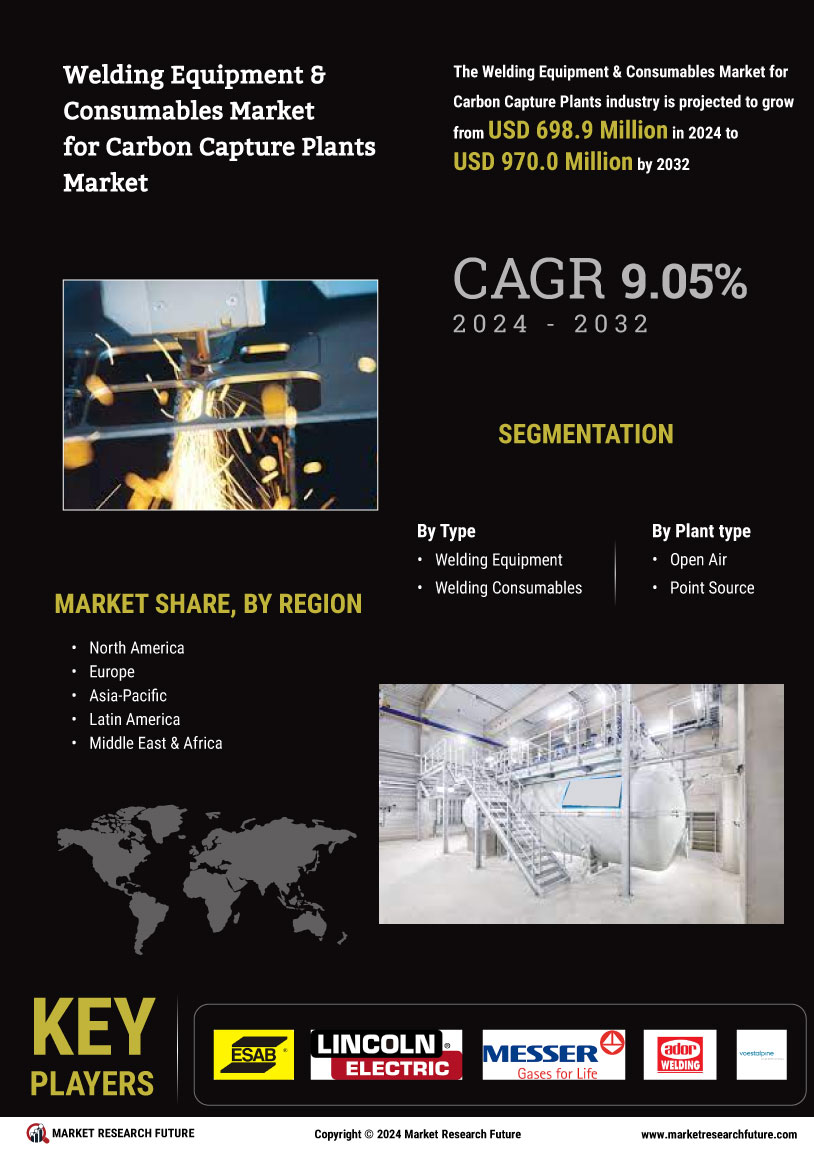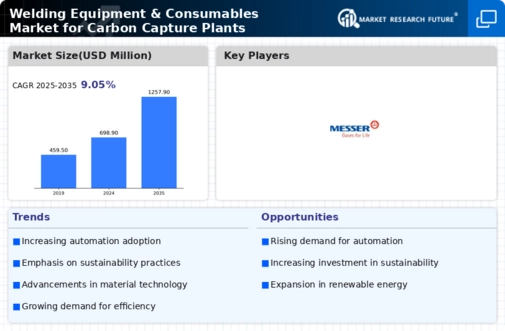RISING DEMAND FOR THE STORAGE, CARBON CAPTURE PLANT AND UTILIZATION OF CARBON EMISSION
Welding equipment and consumables play a crucial role in the construction and maintenance of carbon capture plants. The construction of carbon capture plants requires precise welding which help in ensuring the structural integrity and safety. Welding equipment plays in important role in joining metal. Consumables use in building strong weld. Also, the maintenance and repair of carbon capture require the welding equipment and knowledge. Due to exposure to harsh operating conditions, or for repairs / replacements welding equipment plays an important role as it help in solving the problem and help in increasing the life of the plant.
Welding consumables are used in problems like corrosion, erosion, or mechanical damage, ensuring the plant operates efficiently and safely. Carbon capture plants helps prevent CO2 from building up in the atmosphere, thereby preventing further global warming.
It can tackle or help in sorting the emissions in hard-to-abate sectors, particularly heavy industries like cement, steel or chemicals. CCUS is an enabler of least-cost low-carbon hydrogen production, which can support the decarbonization of other parts of the energy system, such as industry, trucks and ships. Finally, CCUS can remove CO2 from the air to balance emissions that are unavoidable or technically difficult to abate. CCUS deployment has been behind expectations in the past but momentum has grown substantially in recent years, with over 500 projects in various stages of development across the CCUS value chain.
Nevertheless, even at such level, CCUS deployment would remain well below what is required in the Net Zero Scenario. Around 40 commercial facilities are already in operation applying carbon capture, utilization and storage (CCUS) to industrial processes, fuel transformation and power generation. CCUS deployment has trailed behind expectations in the past, but momentum has grown substantially in recent years, with over 500 projects in various stages of development across the CCUS value chain. Since January 2022, project developers have announced ambitions for around 50 new capture facilities to be operating by 2030, capturing around 125 Mt CO2 per year.
Nevertheless, even at such a level, CCUS deployment would remain substantially below (around a third) the around 1.2 Gt CO2 per year that is required in the Net Zero Emissions by 2050 (NZE) Scenario.
CCUS facilities currently capture more than 45 Mt CO2 annually. There are now around 40 commercial capture facilities in operation globally, with a total annual capture capacity of more than 45 Mt CO2.
Seven new large-scale (capture capacity over 100 000 tCO2/year, and over 1 000 tCO2/year for DAC applications) capture facilities have come online since January 2022, including the Red Trail Energy Project in the United States, the Arcelor LanzaTech Carbalyst (Steelanol) project in Belgium, the Global thermostat DAC pilot in the US, and four projects in China (at the Sinopec Qilu Petrochemical Shengli facility, the Jiling Petrochemical CCUS facility, the CNOOC Enping oil field, and the China Energy Taizhou power plant).
While more than 50 new capture facilities targeting operation by 2030 have been announced since January 2022, the pipeline of current projects is only just around a third of the NZE Scenario requirement in 2030.
The company for instance, Air Products and Chemicals, Inc. has created technology solutions for capturing CO₂ from fossil fuel conversion before it reaches the atmosphere. There it has significant opportunities to capture CO₂ from gasifiers and hydrogen plants for use in sequestration, enhanced oil recovery, and utilization. Air Products operates a large-scale system to capture carbon dioxide (CO₂) from our two steam methane reformers located within the Valero Refinery in Port Arthur, Texas. The recovered and purified CO₂ is delivered by pipeline for use in enhanced oil recovery operations.
In Port Arthur, Texas, Air Products created the first retrofit technology to capture carbon on a massive scale. Since 2013, Air Products has captured and recovered approximately 1 million tons of CO₂ annually from two hydrogen plants. This is helping and [protecting the earth from the greenhouse emission and global warming.
The ongoing transition towards sustainable energy solutions appears to be driving an increased demand for advanced welding technologies and consumables, particularly in the context of carbon capture initiatives.
U.S. Department of Energy












Leave a Comment